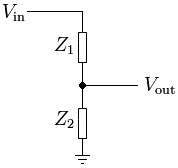Transistors
Note: props to this fantastic article
Transistors are three pin components capable of amplifying or switching signals. In Physical Computing we typically use them to control high voltage devices (like motors, lights, or solenoids) by quickly toggling a pin between HIGH and LOW...
analogIn_PWMOut.py
Hookup Pattern

- Connect Sensor Pin3 to
ESP323V - Connect Sensor Pin2 to
ESP3234 - Connect Resistor Pin2 to
ESP32GND - From pin 27, connect the following in series: a Resistor to an
LEDtoGND
Follow along on your ESP32
For Example
# analog in to pwm...Analog to Digital Conversion (ADC)
Analog to Digital Conversion (ADC) is the process of converting a varying voltage (analog) to a sequence of discrete voltages (digital). MicroPython provides a convenient interface for this via ADC, which can be used on any pin whose number is prep...
for loops
for loops allow one to iterate (repeat) over a collection or sequence. Abstractly all for loops share this structure:
for item in collection:
do somethingBut its often easier to understand them in action.
For Example
x = "Mary had a little lamb"
x = x.split(' ')
for i in x...A voltage divider is a circuit that produces an output that is smaller than its input (where the output is voltage or current).

The above schematic represents the most basic way to use two resistors (labeled as Z1 and Z2) to take some voltage (Vin) and output a fraction of it (Vout). The...



